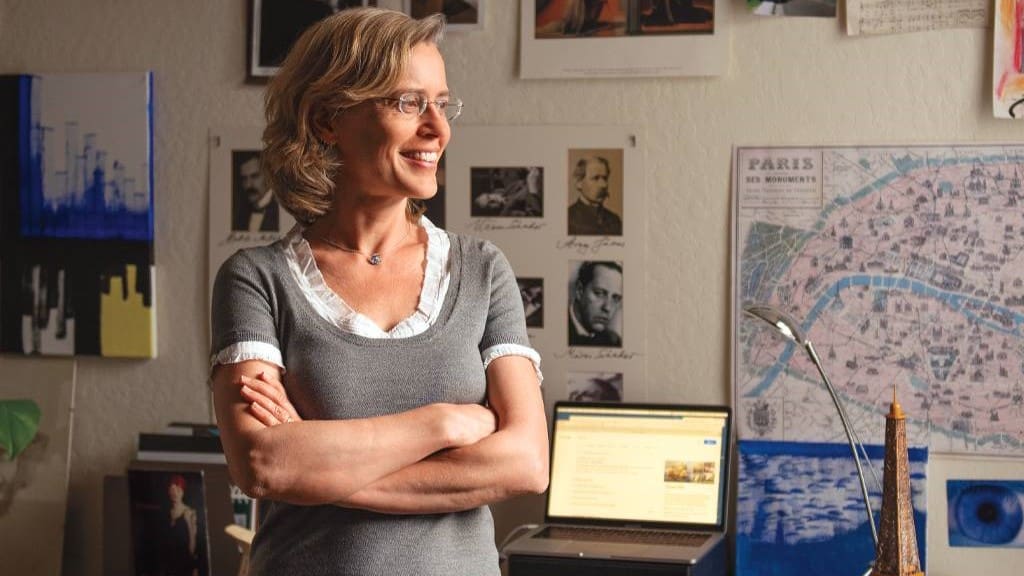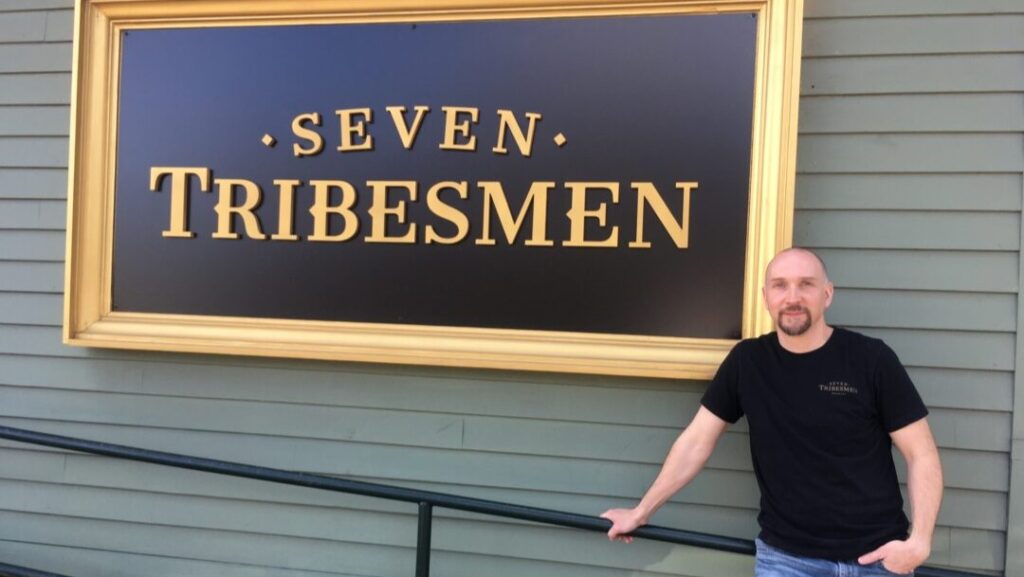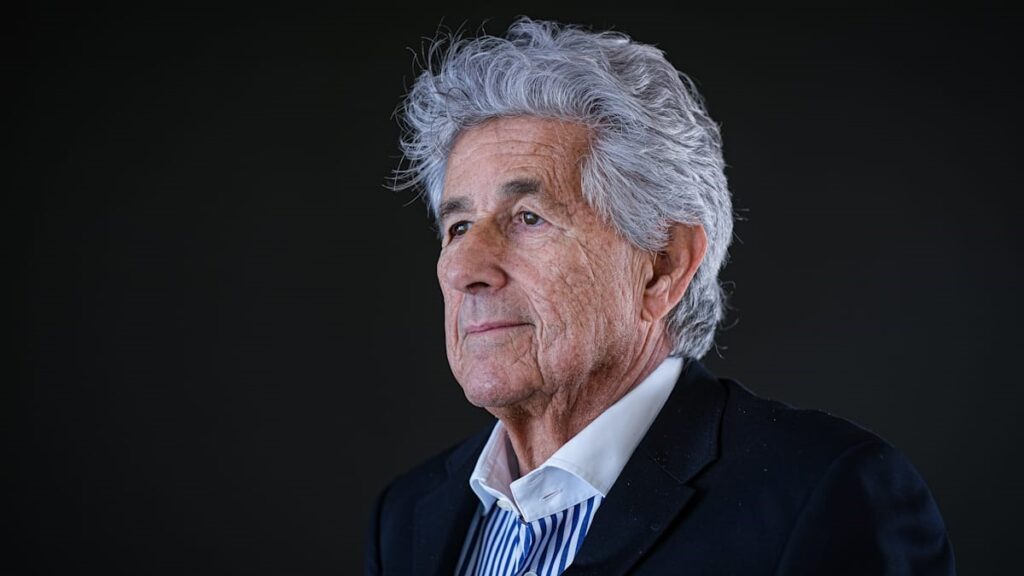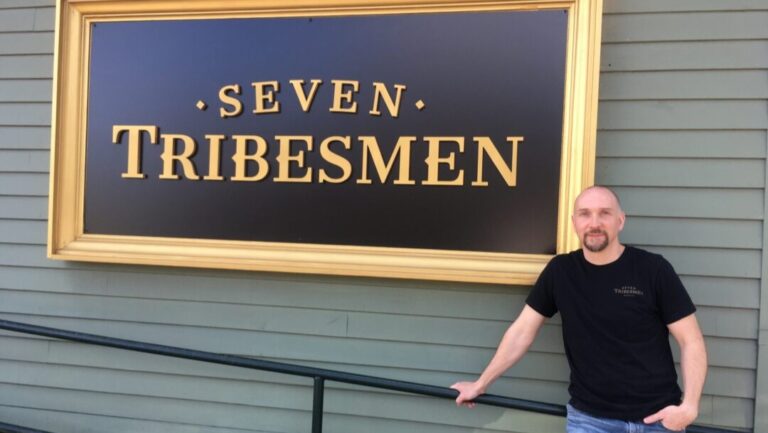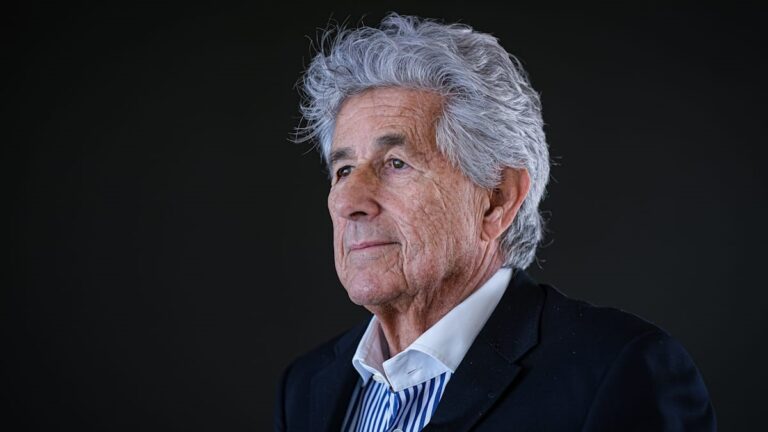Helga Lénárt-Cheng’s life has been peculiar in many ways: she was born and raised in Hungary, studied in Paris and later in Boston, returned to Hungary, and finally settled in California. While becoming a university professor and researcher, she also became a wife and mother of three children. The occasion for our conversation is the upcoming (2–4 May) conference of the American Hungarian Educators Association (AHEA) in New Brunswick, New Jersey, where I will also present my most recent diaspora book.
***
Instead of my usual first question, I would like to start with your special name… Then, of course, I would also like to know when and how you came (back) to America.
My name is a surprise in any Hungarian environment; no one expects me to speak the language. But I am originally Helga Zsófia Lénárt; I trace my roots back to the Saxon minority in Slovakia, and I was born and raised in Hungary. I went to a German minority high school, then I studied German and French at the university. In the 90s various European scholarships became available and thus I ended up in Paris and England. I got my other surname from my husband, who is of Taiwanese descent and was born in America. We met in Paris and went to Boston together; we spent five years and got to know the local Hungarian community. He studied at MIT, and I studied comparative literary history at Harvard. I became interested in autobiographical literature at a very early age; perhaps also because of our colorful and rich family history. What struck me most about it was how strong the need is for people to tell stories about themselves, to document their existence in diaries, memoirs, photo albums, letters or nowadays on social media. Of course, it may seem egotistic, or even boring, because everyone can say what they want, but I found fascinating what, when and how people reveal (and hide) about their lives. It seems to be a very individual choice, but it’s also very culturally determined. For example, a Japanese man in the 12th century who wanted to tell something about himself or his life could only do so if he wrote under a female pseudonym, while in 18th century France, the reverse was often true. I was not interested in learning who wrote a memoir in a particular country or language, but rather in who, how and why tells the stories, and how we collect them. I was researching the rich psychological, philosophical, cultural background of this in Boston, and I continue nowadays in California, too.
In between, you started a family and spent seven years in Hungary. Why did you go back?
We didn’t want our kids to have only a ‘skype grandma’ and wanted them to learn Hungarian well. My husband has always supported this; he has been learning Hungarian for thirty years. We moved to Hungary when the children were very young—the first was three, the second was one and the third was born there—and it worked very well: they still speak the language beautifully. They have always spoken Hungarian with me, and more importantly, also with each other, which is very rare among permanent expatriates, especially in mixed families. I studied bilingualism at university, and the prevailing theory was that in a new country, siblings would switch to the new language within two years. It worked differently in our family, even though the youngest was not even five when we came back in 2008. His vocabulary was limited then, but somehow he never felt it as a barrier for him, and without me asking him to try to find a certain word or expression in Hungarian, he always did. If he didn’t pronounce it perfectly, he was corrected by his siblings and he clearly tried to catch up with them. The middle one was in the first grade when we left Hungary: he studied the Hungarian alphabet in Budapest until January and continued with the English one in California. They never had any resistance to Hungarian. Obviously, it helped that we spent summers in Hungary and thus their relationships with family and friends were strengthened. I always considered it important to have their own connections to Hungary, not only through me.
Why did you come back to the U.S. again and how did it affect the children?
My husband is an IT professional and businessman, working with IT start-ups, and Silicon Valley is very attractive to him. While living in the U.S. again, I tried very hard to have the children remain part of the Hungarian educational system, in addition to the American one, but it was very hard as
there was not as much interest in the diaspora on the part of the Hungarian government then as there is now.
In France all French families who leave the country can continue their French education abroad, by correspondence: they receive materials and take exams online, and so on, and this is organized at ministerial level. This could also be implemented in Hungary, which I already suggested back in 2008, but unfortunately nobody listened. We didn’t plan to go back to Hungary, so this was not our reason; I wanted to do it because I think during their elementary school years they can easily, playfully fit in the Hungarian curriculum, since in America there is no homework in elementary schools. However, we had to give it up at some point, because without systematic support it became more and more difficult. We were subject to the discretion of individual school principals and it took a lot of extra paperwork. It would be very good if a solution could be found for this problem in Hungary, because it is in the long-term interest of the country that those who move abroad remain connected to their home country. I don’t know how many Hungarians would be interested, but I know that many French families are keen to do it. Of course, there are Hungarian weekend schools in the U.S., so we ended up going to the local one, where I also taught for more than ten years. Our daughter is now studying medicine at university, our older son is an engineer and is doing a PhD in artificial intelligence, and our youngest is studying data science at university; they are all strongly attached to their roots.
What about your professional career during the last twenty years?
After finishing my PhD at Harvard, I started to teach at Saint Mary’s College of California, close to San Francisco. This is a 150-year-old private university founded by Christian school sisters. It has a beautiful campus and a social mission of teaching mainly children of recent immigrant groups, trying to uplift them and send them back to their own local communities to help uplift them as well. As far as I know, this is the only order that resisted the Vatican’s efforts to raise scholars and priests, by refusing to teach Latin, since they strongly believe in teaching values and skills that they could take back to their communities. A hundred years ago they were teaching mostly children of Italian and Irish descent; nowadays mostly those of Mexican immigrants. About forty percent of our students are first generation or recently arrived in the U.S. This approach worked very well from the beginning, since our university is in the top five percent in America among universities that have the highest ranking of teaching the socially most disadvantaged groups, which I think is an important measure of successful education. At the same time, I have great freedom as a research teacher and as a tenured professor.
Why is this distinction important? What exactly do you do?
The university teaching situation has changed a lot in the past thirty years: previously, 70 percent of professors were tenured, and only 30 percent were lecturers, but this has been reversed by now, with very serious financial consequences, because lecturers have no insurance or pension coverage. This is why tenured status is a major advantage, alongside research freedom. In addition to my teaching and researching, I have administrative duties. I have been leading the Honors Program for four years. This is not easy to explain either, because in Hungary there is no program exactly like this, whilst in America it exists in almost every university. Perhaps it is most similar to the vocational colleges (szakkollégium in Hungarian), although they do not quite cover the American model. The point is: only 5–10% of our students get in, based on their academic performance, and I try to smooth the path of these 200 or so students by giving them all sorts of extra opportunities, scholarships, seminars, and the like. In early May, I will organize an annual student conference with around 300 students. It’s a challenge, but I really enjoy working with students. I also lead the French program, and next year I will also oversee two more faculties.
You are the president of the American Hungarian Educators Association (AHEA). How much has it changed since its foundation in 1974?
The organization originally brought together professors and researchers of Hungarian origin living in America, whose work is related to Hungarian culture, including language, literature, arts, music, etc. As the environment has changed over time, so has the profile of the organization. Fifty years ago, for example, maintaining relations between the two countries was very different, also in the field of higher education or science. In the 1970s, U.S. professors were much less likely to meet peers from Hungary and online connections didn’t exist. Also, during these fifty years, lots of Hungarian heritage organizations were established, some of which may have originally been a more integral part of AHEA, but have later become independent, and thus
our profile has become increasingly focused on higher education.
Today, it is primarily an association concerned with Hungarian culture at the higher educational and institutional level, with two annual conferences and a prestigious journal, through which we bring together academics of Hungarian origin and/or working on Hungarian topics and give them opportunities to present and/or publish.
What are the main activities of AHEA?
One of our main activities is the organization of scientific conferences. International academic relationships are now more and more intense as Hungarian universities are increasingly looking for opportunities to present and publish abroad; there is more and more pressure on researchers in Hungary to present and publish their articles in English. Our annual conferences are therefore good opportunities for Hungarian academics (from Hungary and from the Carpathian Basin) to present their work. In addition, we try to support our speakers with scholarships for travel and accommodation (by the Research Presentation Award) and for research (by the Helena History Press Scholarship and the Béla Várdy and Ágnes Huszár Legacy Scholarship). We also keep our members informed of many opportunities throughout the year and provide them opportunities to build academic and institutional relationships. Our other main activity is the editing of the Hungarian Cultural Studies annual journal. This is one of the few academic publications of high quality, published in English, recognized by the Hungarian Academy of Sciences (MTA) and freely accessible to anyone (open access, OA). This is also a huge task as it needs to meet very strict formal–professional standards and the articles included need to be published for the first time.
Do you see any room for improvement in higher education?
Under and after communism there were Hungarian departments or at least appointed Hungarian professors at a few American universities. Unfortunately, there are none today. There was a famous Hungarian program at Indiana State University in Bloomington, where several academics and scientists, for example Mihály Szegedy-Maszák, used to teach. András Ludányi would certainly have a lot to say about it. There was a revival of interest in Hungary from the U.S. side throughout the 1990s, and a lot of academics came to do research and lecture. But these have all ceased over time and the departments and programs were closed down and merged into other Eastern European research centers, and are no longer headed by Hungarian professors, while it would be very important to have them for the promotion of Hungarian culture in the U.S. As a PhD student, I was very shocked to see that Harvard has had chairs of all sorts of relatively small nationalities (Slovak, Greek, Ukrainian, and so on), except Hungarian. These departments and chairs can only be created through international cooperation and the involvement of the business world, i.e. it would need advocacy and money.
We would need Hungarian academic departments and Hungarian professors in North America again.
When and how did you get involved in AHEA?
Before talking about myself, I would like to emphasize that the organization would not have functioned so well for fifty years if it did not have some very enthusiastic and hard-working people who took its fate to heart. For example, Enikő Molnár Basa, who was president several times and managing director for decades; Márta Pereszlényi-Pintér, Klára Papp, Katalin Vörös, Judit Némethyné Kesserű, Kálmán Magyar, Jim Niessen or Katalin Kadar-Lynn. They are all long-standing and committed members of AHEA who have been keeping it going for decades. Everybody is working voluntarily as we are passionate about promoting Hungarian culture. I first attended an AHEA conference in 2009 at Berkeley University, where I delivered a lecture on Sándor Lénárd (no family connection; it is a complete coincidence that the storms of 20th century Hungarian history forced both families to change their names), about whom I wrote my first book together with Zsuzsa Vajdovics. Afterwards I became an active member; later I was board member and vice-president for a few years, and in 2023 I was elected to be the president. It takes a lot of hard work and commitment, but it was natural for me to push the cart forward together, with a lot of help from our vice-president Zsuzsanna Varga and our secretary Nóra Deák. We had several successful online conferences during the Covid-pandemic, when it became clear that there was a growing interest from researchers living in Hungary, so we decided to hold annual online or hybrid conferences in autumn, next time in August in cooperation with the University of Debrecen, in addition to our annual in-person spring conferences. Every five years, we organize the spring conferences in Hungary or the Carpathian Basin, involving local Hungarian professors. In 2015, we held it in Kolozsvár, Romania; in 2025 we plan to have it in Pécs, Hungary.
What are the usual topics of these conferences and what will you focus on this year?
We cover academic topics concerning Hungarian culture or Hungarian–American relations or diaspora. It is important to emphasize this because there currently are many organizations in the U.S. involved in the preservation of Hungarian culture, typically not on a scientific level, rather on an educational or community level. We always try to choose a theme in the context of the given year, but it usually has no current political implications. The 60th anniversary of the 1956 revolution was an exception, otherwise it is always broad enough to include speakers from several fields, from linguists to folk musicians, from mathematics professors to historians. For example, Dr. Judit Kerekes, a professor of mathematics, will give a lecture on a teaching model used on both sides of the Atlantic, while you will present your book on the North American diaspora. This year it will be held on 2–4 May, at Rutgers University in New Brunswick (New Jersey) titled Reimagining Boundaries: Hungary and Hungarians in a Global Context. Participants can hear presentations based on new research and gain new insights, and importantly, what they hear and who they meet can feed back into their own scientific work, generating a new idea or a new collaboration. Our audience typically ranges from undergraduates to PhD students and researchers, but anybody interested in a topic who registers is welcome.

